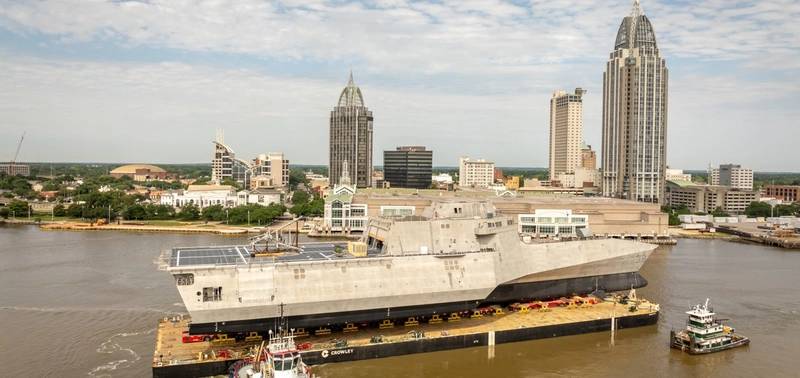Austal USA Launches US Navy's Final Independence-variant Littoral Combat Ship
Mobile, Ala. shipbuilder Austal USA has launched the future USS Pierre (LCS 38), the last ship of the U.S. Navy’s Independence-variant Littoral Combat Ship (LCS) program.
Following launch, Austal USA’s test and activation team will spend the next several months preparing her for sea trials later this year.

Pierre, christened in May, is the Navy’s 19th and final Independence-variant LCS, and will be deployed to the Pacific fleet area of responsibility supporting forward presence, maritime security, sea control, and deterrence. She is the second U.S. Navy ship launched at Austal USA this year.
“Meeting this ship milestone in such a safe and timely manner demonstrates how well our Austal USA launch team, transporter operators and tug pilots have learned to work together over the last 13 years, seamlessly executing this technical launch process,” stated Austal USA Vice President of New Construction, Dave Growden. “Our industry teams work methodically alongside our Navy partners to improve this innovative process with each launch evolution, guaranteeing the Navy a quality product delivered on time and on budget.”
The LCS class consists of two variants, Freedom and Independence, designed and built by two separate industry teams. The Independence-variant team is led by Austal USA (for the even-numbered hulls, e.g. LCS 2).
Pierre is the 23rd LCS launched at Austal USA using a multi-step method of rolling the ship onto a moored deck barge and then transferring the ship from the barge to a floating dry dock. The dry dock is submerged enabling the ship to float for the first time and then removed from the dry dock and moored pier side to get ready for engine light-off and trials.

